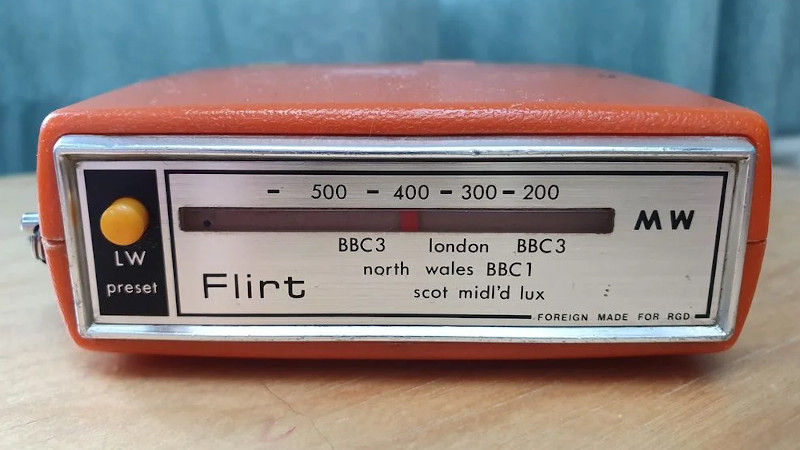The invention of the transistor revolutionized radio, allowing receivers to be made far more compact and portable than ever before. In the middle of the 20th century, the devices exploded in popularity, and pocket transistor radios took the market by storm. [MisterM] had fond memories of such times, and when he found a 1970s Flirt radio at a car boot sale, it led to a cute little build.
The radio was stripped of its original hardware, with [MisterM] preferring internet radio to the terrestrial variety. In its place, a Raspberry Pi Zero was installed. This was fitted with a cavalcade of off-the-shelf modules to make it fit for pumping out the tunes. A Speaker PHAT was used for audio, while an Adafruit Micro Lipo board handled battery charging and a Pimoroni Lipo Shim served as the power supply. All this was bundled up inside the original casing.
The radio’s controls are a neat hack. The original volume and tuning dials were removed, sliced up, and glued onto two lever microswitches. This allows them to act as buttons instead. A new power switch was installed behind the original, and the Speaker PHAT’s LEDs were placed behind the tuning dial to act as a rudimentary display.
It’s a tidy build that repurposes an attractive vintage artefact into a device of the internet age, while remaining externally the same. [MisterM] has form in this space, with his vintage radio console build and video doorbell being particular highlights. Video after the break.
















Yawn,
another “take an old appliance and use the box to put electronics there” video.
Even the original loudspeaker was thrown away and a way smaller speaker was used, and also the 3,5 mm jack was thrown out.
I agree. These mods are glorified as restorations, when in reality everything but the housing is thrown away and a totally new level of bodge is created.
Let’s face it, this isn’t a restoration (and to be fair as far as I’ve noticed nowhere is it claimed it is), but more importantly why waste the time complaining what another person does with their own legally obtained property. Let’s just move on and wait for a more interesting project to be posted instead of beating this dead horse.
It’s not really a “transplant”, is it :) More like a replacement.
A transplant’s when you replace part of a living thing, whereas it came out six foot under in a land-fill. Just the dead case is left, leaving none of the actual radio behind.
Still looks cute though
I miss a user interface except the volume buttons. I think I would have used two tactile switches under one half of the original volume knob, so you could have an up/down control by rocking this part forward or backward. Then the other button could at least function as “tuning” of preset internet radio stations.
This is recycling a case of an old appliance.
Besides even the loudspeaker and the earphone jack are thrown out, and a smaller speaker is used, leaving an open grille and making all sound worse.
One of my Army radio school instructors told us of a “8 Transistor” radio they used to have at the school.
Inside, 3 of the transistors were just glued to the PCB, serving no other function than to up the count of transistors for advertising.
Haha! More is better!
I too enjoy putting ketchup on a steak and mixing 15 year old scotch with Mountain Dew.
Whatever floats your boat I guess lol
Chainsaw job of another reboxing dirty work.
The face-plate is even upside up, while I’m confident it could be mounted up side down while still having the speaker grid up, pity!
It looks like it was a neat old radio.
I guess I should have kept my mouth shut when Altoids tins were all the rage.
I have never seen this type of radio before (not in the netherlands at least). Bit of a waste if you ask me. Should’ve used one of those super common Sanyo RP1270 models, or something else that is not special/rare in any way. There are tons of common radios, and in such cases it’s not really a problem if a few of them are modified beyond restauration.
I often make a line input by soldering a fine shielded wire to the volume potentiometer. Works well for the times that there’s nothing interesting on the radio.